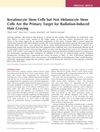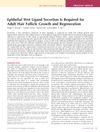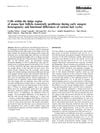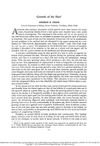The Effects of Gamma Rays on the Regeneration of Hair Follicles Are Carried Over to Later Hair Cycles
November 2015
in “
International Journal of Radiation Biology
”
gamma rays hair follicle regeneration telogen phase anagen phase hair follicle density curved hair follicles white hairs hypopigmented hair bulbs hair follicle stem cells melanocytes K15-positive hair follicle stem cells hair bulge region gamma radiation hair growth cycle hair growth phase hair density hair structure hair color stem cells pigment cells

TLDR Gamma-ray exposure can cause long-lasting damage to hair follicles, affecting hair structure and color.
The study from 2015 examined the long-term impact of gamma-ray exposure on hair follicle regeneration in 53 C57BL/10JHir mice, with 28 serving as controls and 25 exposed to a 2.5 Gy dose of gamma rays. The findings revealed that exposure during the first telogen phase led to a persistent decrease in hair follicle density and the development of structural abnormalities such as curved hair follicles, as well as white hairs and hypopigmented hair bulbs in the third anagen phase. This suggests that the effects of gamma-ray exposure on hair follicle stem cells and melanocytes can extend into subsequent hair cycles, causing changes in hair structure and pigmentation. Despite a slight decrease, K15-positive hair follicle stem cells remained in the hair bulge region after irradiation, indicating some resilience to gamma-ray damage.








